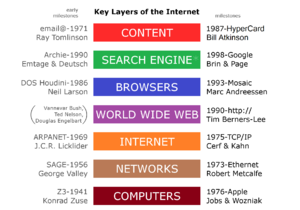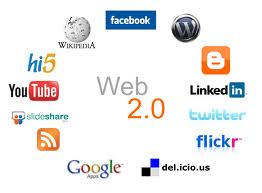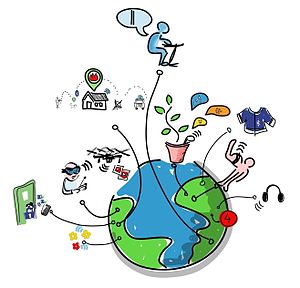Difference between revisions of "ICT student textbook/What is the nature of ICT level 3"
Jump to navigation
Jump to search
| Line 48: | Line 48: | ||
=== Activities === | === Activities === | ||
| − | # Activity 1 - [[ICT student textbook/The | + | # Activity 1 - [[ICT student textbook/The machine is using us|The machine is using us]] |
| − | # Activity 2 - [[ICT student textbook/The | + | # Activity 2 - [[ICT student textbook/The global digital library|The global digital library]] |
# Activity 3 - [[ICT student textbook/I have a new address|I have a new address]] | # Activity 3 - [[ICT student textbook/I have a new address|I have a new address]] | ||
Revision as of 03:17, 23 November 2016
Objectives
- Understanding that the Internet is changing the way we live; and is becoming prominent in our society
- Appreciating that connecting is an important aspect of ICT and how peer learning is possible with ICT
- Understanding that Internet is a place for self learning and exploring
- Understanding the safe and ethical use of Internet
What is the internet
| If you want information about some book available in your library, you can connect to the library's computer from home and get the information that you want. There are many such computers in different organisations giving us different types of information. These computers are connected to one another, their network is called the Internet. The Internet is a physical network of millions of computers across the world, each of which has a unique identifier. Some of these computers act as 'servers', they store data which can be accessed by other computers. The millions of computers which are part of the Internet, is like a huge library with information on almost any issue. Initially the internet was a set of computers connected by one another and information requests were sent and received through networks. | |
|---|---|
| But this was difficult. In 1989 Sir Timothy Berner Lee developed a system by which the computers can transfer information through a method called "Hyper Text Mark-up Language".
This makes connection between computers more accessible to all and it allows different kinds of content to be shared across the internet. This was a significant shift in the way the internet developed. | |
| Now can you think of all the places the internet is being used:
- Reading information - News - Radio - TV programmes - Webcast instead of telecast - Booking movie tickets - Shopping ....and so many more |
Digital skills
- Accessing the internet and browsing the web (understanding the difference between the two)
- Downloading information and organizing
- Identifying license information and using downloaded information appropriately
- Using safety tips while browsing
- Using emails to communicate
Your learning outputs
- You will develop a concept map on what you intend to research on the internet
- Your concept map will lead to a text document with links to useful websites accessed alongwith a summary of the information on the site
- A short reflection on the role of technology and society and how students should interact with it - this can be in the form of a presentation or a text document with graphics
- Print to file copies of email conversations with your friends
Activities
- Activity 1 - The machine is using us
- Activity 2 - The global digital library
- Activity 3 - I have a new address
Self learning check-list
- Am I aware that the internet is a place that I can access information from
- Do I understand how the internet is changing our world?
- Do I know how to communicate using email?
- Am I aware of safety precautions I must take while using the internet?


